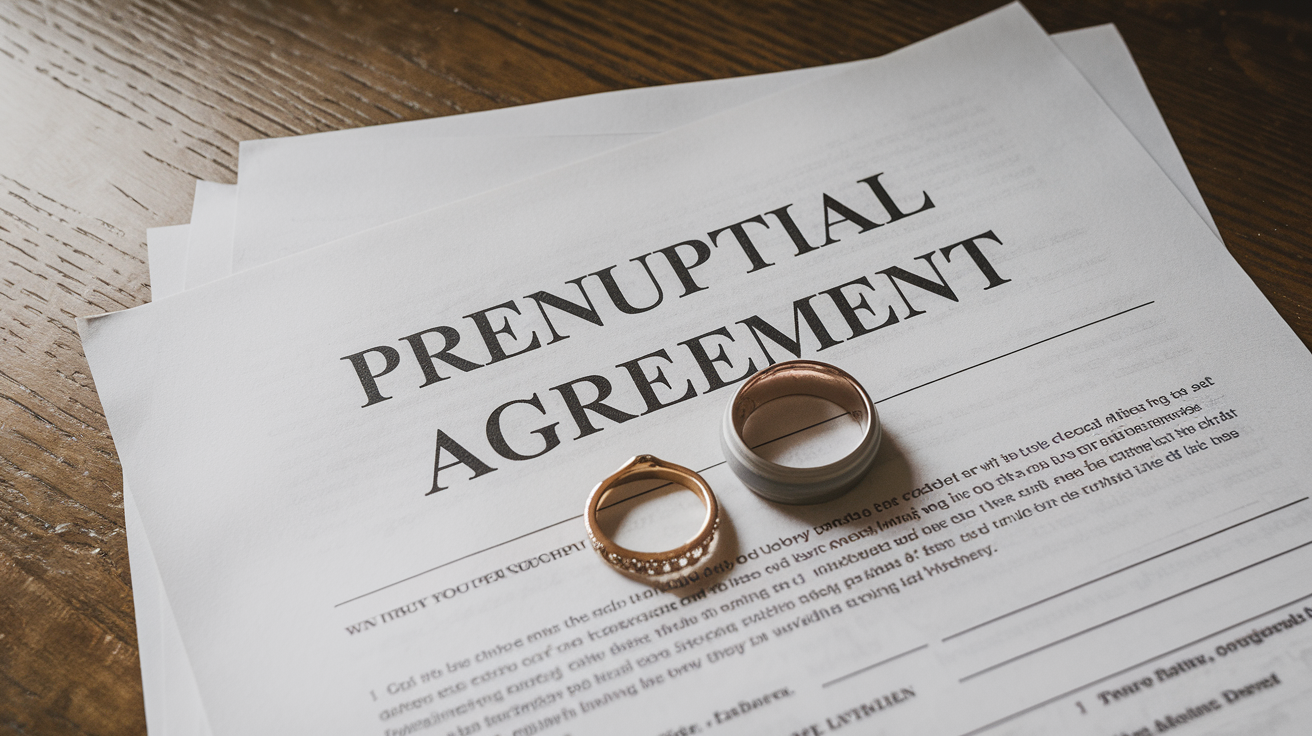Isn’t it hard to love someone who steps back just when you get close?
Well, many partners experience this frustrating pattern – one moment, there’s warmth and connection, and the next moment, there’s distance and withdrawal.
But here, the encouraging part is that you’re not alone, and there are steps you can take to build a stronger bond with an avoidant partner.
This blog will show you practical ways to understand their behavior, improve communication, and create a secure relationship – without compromising your own emotional needs.
Who is an Avoidant Partner

An avoidant partner shows specific relationship behaviors based on past experiences and attachment style.
These partners often put up emotional walls to protect themselves. They might seem distant after intimate moments, need lots of alone time, or struggle to express their feelings openly.
Key Signs of Avoidance
| Sign | Description |
|---|---|
| Pulling Back When Emotional | They become distant when the connection feels strong, reducing communication and plans together. |
| Physical and Emotional Walls | They avoid sharing feelings and may act tense during affectionate gestures or personal discussions. |
| Discomfort with Being Needed | When asked for emotional support, they feel overwhelmed and prefer to handle problems alone. |
| Mixed Signals | They alternate between closeness and distance, leaving you unsure of where you stand. |
| Focusing on Flaws | They magnify small issues, using them to justify creating emotional distance. |
Strategies to Deal With an Avoidant Partner
Let’s explore the ways to deal with an avoidant partner smoothly and easily.
1. Ways to Communicate with an Avoidant Partner

Give Space While Staying Present
Your partner needs to know they can trust you and won’t push too hard. Let them set the pace for deeper talks, but show you’re there when they’re ready.
A simple “No pressure, but whenever you want to talk, I’m here” works better than asking many questions. This balance helps them feel safe without feeling trapped.
Use Clear, Gentle Communication
Instead of saying, “You never share your feelings,” try “When we talk about our day, it helps me feel closer to you.”
Focus on expressing your needs without making your partner feel blamed or pressured. Short, specific statements work better than long, emotional discussions.
Pick the Right Moment
Notice when your partner seems more open and relaxed – maybe after a good meal or during a calm weekend morning.
These moments make better times for meaningful talks than when they’re stressed or tired. Keep these conversations brief at first, building trust gradually.
Create a Comfortable Environment
Side-by-side talks often feel less intense than face-to-face discussions. Try talking during a walk or while doing a shared activity.
This takes the pressure off and helps your partner feel more at ease sharing their thoughts.
Respect Their Processing Style
Some people need time to think before responding to emotional topics. If your partner says, “Can we talk about this later?” agree on a specific time to continue the conversation.
This shows you respect their needs while ensuring important talks don’t get pushed aside.
Acknowledge Small Steps
When your partner does open up, even a little, show appreciation without overwhelming them. A simple “Thank you for sharing that with me” goes a long way.
This positive reinforcement helps build trust over time.
Set Gentle Boundaries
While giving space is important, you can still express your needs. Say something like, “I understand you need time alone. Could we set aside 30 minutes tomorrow to catch up?”
This respects their independence while maintaining connection.
2. Ways to Build Trust and Emotional Intimacy

Start Small and Build Gradually
Share brief personal stories and watch how your partner responds. Maybe mention a childhood memory or tell them about your day.
These small shares feel safer than big emotional discussions. When they share something with you, respond with warmth but keep your reaction low-key.
Show Reliability Through Actions
Do what you say you’ll do. Send that text when you say you will. Show up on time. Keep their confidence.
These small, consistent actions prove you’re dependable. Your partner notices these patterns, even if they don’t mention it.
Respect Their Comfort Zone
Pay attention to signs that your partner feels overwhelmed. If they step back, let them. Forcing closeness never works.
Instead, stay steady and predictable. Let them know it’s okay to take space when they need it.
Celebrate Small Moments of Connection
Notice when your partner makes an effort to be closer. Did they text you during their workday? Share a worry with you? Value these moments without making a big deal about them.
A simple smile or “thanks for telling me” shows you appreciate their effort.
Build Safe Routines Together
Create regular, low-pressure ways to connect. Maybe it’s a weekend coffee ritual or walking together after dinner.
These calm, predictable times together help your partner feel secure without feeling trapped.
Handle Setbacks with Grace
Sometimes, your partner might pull away just when things are going well. Stay calm when this happens.
Don’t chase or pressure them. Your steady response shows them that you can handle their need for space.
3. Setting Healthy Boundaries

Know Your Non-Negotiables
What do you truly need to feel secure in this relationship? Maybe it’s a good morning text, a weekly date night, or open communication about future plans.
Write these down for yourself. Being clear about your needs helps you express them better to your partner.
Express Needs Without Demands
Share your boundaries using calm, clear statements. Instead of “You must call me every day,” try. “Regular contact helps me feel connected.
Could we figure out a check-in routine that works for both of us?” This opens a discussion rather than creating pressure.
Find Middle Ground
Look for solutions that work for both partners. If they need lots of alone time, agree on how you’ll stay connected during these periods.
Perhaps quick texts or specific times to catch up. This shows you respect their space while protecting your needs.
Maintain Your Own Life
Keep nurturing your friendships, hobbies, and personal goals. This healthy separation benefits both partners.
It gives your avoidant partner breathing room while ensuring you have fulfilling activities and support outside the relationship.
Set Time Boundaries
Create clear agreements about time together and apart. Maybe you spend weekends together but keep some weeknights for individual activities.
Having these expectations clear upfront prevents misunderstandings and reduces anxiety for both partners.
Listen to Your Feelings
Notice when something doesn’t feel right. If you’re constantly anxious, that’s a sign that your boundaries need adjustment.
Your feelings matter just as much as your partner’s need for space.
4. Managing Your Own Emotions

Understand Your Feelings
When your partner pulls away, it’s normal to feel hurt or rejected. These feelings don’t mean you’re too needy or doing something wrong.
Take time to acknowledge your emotions without judgment. Writing in a journal or talking with a trusted friend can help process these feelings.
Practice Self-Care Daily
Your emotional health matters. Set aside time each day for activities that bring you peace. This might mean reading a book, taking a walk, or spending time in nature.
These moments of self-care keep you centered when relationship challenges arise.
Build Your Support Network
Don’t carry your worries alone. Share your experiences with understanding friends or family members.
They can offer different perspectives and remind you of your worth. Consider joining support groups where others share similar relationship experiences.
Learn Self-Soothing Techniques
When anxiety hits, have tools ready to calm yourself. Try deep breathing exercises, listen to calming music, or take a warm bath.
These simple actions can help regulate your emotions when your partner needs space.
Keep Perspective
Remember that your partner’s need for distance usually stems from their own past, not your worth.
Rather than taking their behavior personally, view it as their coping mechanism. This outlook helps maintain your self-esteem during tough moments.
5. Seek Professional Help

Signs It’s Time for Professional Support
Watch for patterns that keep repeating without improvement.
Does every attempt at closeness end in withdrawal? Do conversations about the future lead to arguments?
When small issues turn into major conflicts or when weeks pass without meaningful connection, professional guidance can offer new solutions.
What Couples Therapy Offers
A skilled therapist creates a safe space for both partners to express their needs. They help translate different communication styles and teach practical tools for connection.
Through guided sessions, you’ll learn to understand each other’s attachment patterns and find ways to meet in the middle.
Benefits of Individual Therapy
Personal counseling helps each partner understand their own patterns. For the avoidant partner, therapy offers ways to work through past hurts that cause withdrawal.
For their partner, sessions provide strategies to manage anxiety and build self-confidence. Both can grow stronger individually, which strengthens the relationship.
Finding the Right Help
Look for therapists who specialize in attachment styles and relationship dynamics.
The right professional match matters – some couples need to try more than one therapist before finding someone who clicks with both partners.
What to Expect
Progress takes time and commitment from both partners. Early sessions might feel uncomfortable as you explore sensitive topics.
But a good therapist helps you move at a pace that feels safe for everyone. Small changes lead to bigger breakthroughs.
6. Knowing When to Let Go

Signs the Relationship isn’t Growing
Look at patterns over months, not just days. Has anything truly changed despite many conversations? When efforts to connect meet constant walls, and your emotional needs stay unmet, it’s time to look closely at the situation.
Pay attention if you feel lonely even when together or if the relationship brings more stress than joy.
Questions to Ask Yourself
Take time to reflect honestly. Are both partners willing to work on the relationship? Have promises for change led to real action?
Does staying feel like hoping for a different person rather than accepting who they are? Your answers help clarify the path forward.
Making the Decision
This choice needs careful thought, not quick reactions. Write down your feelings, talk with trusted friends, and consider speaking with a counselor.
Look at your values and long-term happiness. Remember that ending a relationship doesn’t mean either person failed – sometimes paths simply need to divide.
Moving Forward After Separation
Healing takes its own time. Start with small steps each day. Focus on activities that bring you peace and surround yourself with supportive people.
Consider what this relationship taught you about yourself and your needs. These lessons guide better choices in future relationships.
Taking Care During Transition
Create new routines that fill the space left behind. Return to old hobbies or try new ones. Spend time with people who make you feel valued. Most importantly, be gentle with yourself as you adjust to this change.
Conclusion
No doubt, building a relationship with an avoidant partner takes understanding, patience, and self-awareness.
But, positive change becomes possible when both partners commit to growth and open communication.
Remember that small steps matter. Each moment of connection, every honest conversation, and all the tiny breakthroughs add up over time.
While you work on strengthening your bond, keep nurturing your own well-being, too.
Whether you choose to build a stronger connection or realize it’s time to move forward separately, your feelings and needs matter.
Trust your inner wisdom, seek support when needed, and know that you deserve a relationship that brings out the best in both partners.
Frequently Asked Questions
What Hurts an Avoidant the Most?
Being pressured to share feelings or make quick emotional commitments causes deep distress. Their biggest fear is feeling trapped or controlled in relationships, which can trigger withdrawal.
Who are Avoidants Most Attracted To?
Avoidant people often feel drawn to very caring partners who give lots of attention and emotional support. However, they may pull away when these partners seek deeper connections.
Are Avoidants Hypersexual?
Some avoidant partners use physical intimacy as a substitute for emotional closeness. They may feel more comfortable with sex than with sharing feelings or having deep conversations.








